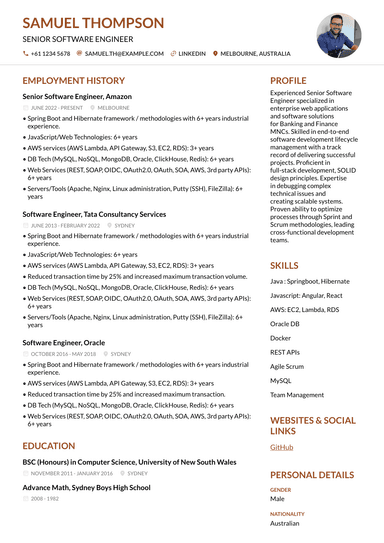Written by
Author
Should I Include a Picture on My Resume? A Comprehensive Guide
Build your resumePublished: April 22, 2023
Deciding whether to include a picture on your resume is a nuanced choice that depends on factors like regional norms, industry expectations, and personal preferences. While a photo can enhance personal branding and visual appeal, it may also introduce bias or legal concerns. Weigh the pros and cons, and consider alternative ways to showcase your image, such as LinkedIn, personal websites, or social media presence, to make an informed decision that best suits your unique situation.
The question of whether or not to include a picture on your resume has been a subject of debate for years. Some argue that it adds a personal touch, while others believe it may lead to unconscious bias during the hiring process. In this in-depth article, we will examine the pros and cons of including a photo on your resume, discuss current trends in the job market, and provide guidance on making the best decision for your situation.
Table of Contents
- The Evolution of Resume Standards
- Pros of Including a Picture on Your Resume
- Cons of Including a Picture on Your Resume
- The Influence of Cultural and Regional Norms
- Industry-specific Considerations
- Alternative Ways to Showcase Your Image
- Final Thoughts: Making the Right Choice
- The Evolution of Resume Standards
1. The Evolution of Resume Standards
Resumes have come a long way over the years, with formatting and content expectations changing to adapt to the ever-evolving job market. In the past, it was not uncommon to include personal details like marital status, age, and even photographs on resumes. However, as hiring practices evolved to promote fairness and reduce discrimination, many of these elements have become less prevalent.
2. Pros of Including a Picture on Your Resume
a. Personal branding: A professional-looking photograph can help establish your personal brand and make your resume more memorable to employers. b. Visual appeal: A well-placed image can enhance the aesthetics of your resume and make it stand out in a stack of applications. c. Industry expectations: In certain fields, such as acting or modeling, including a headshot is expected and can even be a requirement.
3. Cons of Including a Picture on Your Resume
a. Unconscious bias: A photo can potentially introduce bias, as employers may form opinions based on your appearance, age, or ethnicity. b. Legal concerns: In some countries, such as the United States, employers may be hesitant to consider resumes with photos due to anti-discrimination laws. c. Limited space: A photograph can take up valuable real estate on your resume, forcing you to sacrifice other important information.
4. The Influence of Cultural and Regional Norms
Resume standards and expectations can vary significantly depending on the region or country you are applying for jobs in. For instance, including a photograph on a resume is more common in European countries like Germany and France. When applying for positions abroad, it is essential to research local customs and adapt your resume accordingly.
5. Industry-specific Considerations
Certain industries may have different expectations when it comes to including a photograph on a resume. For example, jobs in the creative sector, such as graphic design or fashion, may be more receptive to images on resumes. On the other hand, more conservative industries like finance or law might frown upon photographs. It's essential to understand the norms of your target industry before making a decision.
6. Alternative Ways to Showcase Your Image
If you decide not to include a picture on your resume, there are alternative ways to howcase your image and connect with potential employers:
a. LinkedIn Profile: Ensure that your LinkedIn profile has a professional-looking headshot, as recruiters often check candidates' profiles to learn more about them. Make sure your profile is up-to-date and reflects your resume's content.
b. Personal Website or Portfolio: Create a personal website or online portfolio to showcase your work, skills, and achievements. Include a professional photograph on the "About Me" or "Bio" page to provide a visual representation of yourself.
c. Social Media Presence: Maintain a professional image on social media platforms, as employers may search for your online presence during the hiring process. This can be particularly important for roles in industries like marketing, where a strong online presence is essential.
7. Final Thoughts: Making the Right Choice
Deciding whether to include a picture on your resume ultimately depends on various factors, such as the country or region where you are applying, industry norms, and your personal preferences. Consider the pros and cons discussed in this article and make an informed decision that best suits your individual situation.
In summary, while including a picture on your resume can help you stand out and showcase your personal brand, it may also introduce potential biases or legal concerns. If you decide not to include a photo, remember that there are alternative ways to present your image, such as through LinkedIn, a personal website, or your social media presence.
By carefully weighing the advantages and disadvantages, you can make a decision that maximizes your chances of landing the job you desire while minimizing potential risks.
Let us know what you think, also don't forget to check MyResume.lk to create your resume for free!
Referance Links:
